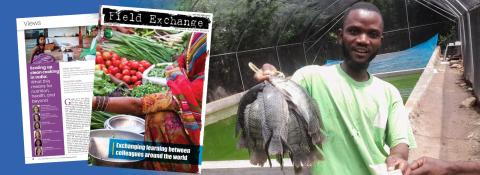Adolescent Pregnancy and Child Undernutrition: A Meta-analysis
This is a summary of the following paper: Welch C, Wong C, Lelijveld N et al (2023) Adolescent pregnancy is associated with child undernutrition: Systematic review and meta-analysis. Maternal & Child Nutrition, 20, 1, e13569. https://doi.org/10.1111/mcn.13569
Adolescent pregnancy is linked to foetal growth issues, raising concerns about childhood wasting and underweight. However, little is known about how young maternal age influences childhood anthropometry after the neonatal stage. This review and meta-analysis explored the association between adolescent pregnancy and child wasting and underweight, delving into possible social and biological factors.
Peer-reviewed literature from 1990 onwards were systematically reviewed for studies reporting wasting and/or underweight in children aged under five years born to adolescent mothers (aged 10-19, or ≤24 where relevant) in low- and middle-income countries. Of a total of 92 studies identified, 57 were included for meta-analysis, while all underwent qualitative synthesis. Flexibility in inclusion criteria was extended to include infants aged under one month and mothers aged 20-24 years, subject to meeting all other eligibility criteria. This was due to their being limited studies focusing solely on infants aged one month and mothers under 20 years.
Results from the meta-analysis showed that children born to adolescent mothers (≤24 years) compared with adult mothers were associated with 1.12 times greater odds of moderate underweight (p = 0.04) and 1.21 times greater odds of severe underweight (p < 0.01) in children aged 1 - 59 months. Pooled analysis for child wasting, presented as odds ratios, showed no statistically significant association between adolescent pregnancy (≤24 years) and moderate wasting (OR 1.05, p = 0.17) or severe wasting (OR 1.16, p = 0.59) in children aged 1 - 59 months compared to adult pregnancy.
While the pooled OR indicated associations between the subgroup of adolescents aged 10-19 years versus adult pregnancy and moderate and severe wasting, findings were not significant (moderate wasting, OR p = 0.08; severe wasting, OR 1.15; p = 0.83).
In Asia, adolescent pregnancy (≤24 years) was found to be associated with a 16% higher likelihood of moderate underweight (p = 0.02) and a 9% higher likelihood of moderate wasting (p = 0.04) in children aged 1-59 months compared to pregnancies among adults. Additionally, for severely underweight children in Asia, there was a 23% higher likelihood for those born to adolescent mothers (p = 0.03). However, no effect of adolescent pregnancy on severe wasting was found. In sub-Saharan Africa, adolescent pregnancy showed no effects on moderate underweight or moderate to severe wasting. No data was presented on severely underweight.
The study's strengths were a systematic approach, broad geographical coverage, and the large number of papers included in the review. That said, using numerous cross-sectional studies and open-source datasets does introduce limitations. Efforts were made to validate and remove duplicates, but some datasets may have been overrepresented in the meta-analysis – impacting reliability. Certain countries like Bangladesh and India were overrepresented, influencing stronger associations in Asia.
This review shows that being born to an adolescent mother, compared to an adult, increases the risk of child underweight and, in Asia specifically, moderate wasting. Reviewed evidence suggests that maternal nutritional status may play an intermediary role. This underscores the importance of interventions to delay adolescent pregnancy and improve adolescent nutritional status, aiming to mitigate childhood undernutrition and break the intergenerational cycle of malnutrition.


